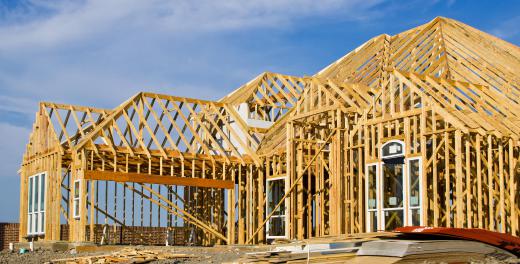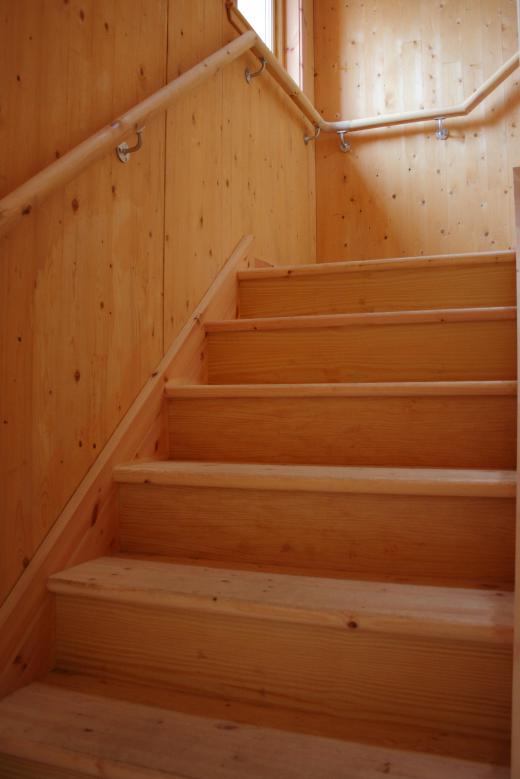Also sometimes known as a strong back, a strongback is a type of construction that helps to enhance the strength of some type of structure by adding a secondary support at a key point in the design. The idea is to provide additional support at points in which the failure of the main support network would lead to the collapse of the structure as a whole. This type of additional element in construction can be successfully utilized in commercial buildings, homes, and even in the construction of boats and ships.
As it relates to the construction of a commercial building, a strongback is often in the form of a girder or beam that helps to reinforce the overall structure. For example, an additional girder or set of girders may be placed in close proximity to a girder that is positioned to bear a great deal of weight in the overall structure. Doing so creates a situation in which any damage to that central girder does not immediately lead to the collapse of the weight normally carried by that support. Instead, the burden shifts to the two strongback girders and makes it possible for repairs to be made before permanent damage to the structure takes place.

In a home, a strongback is often a beam that is used to reinforce the efficiency of floor and ceilings joists within the construction. With this application, the strongback joist works in conjunction with the beam to help keep floors and ceilings level, even if the support or weight-bearing beam should begin to deteriorate over time. The same general concept may be used to reinforce staircases, by attaching the strongback bracing to the stringers on the staircase, making it possible for the structure to remain stable even when subjected to stress that would normally cause the stringers to fail.

The strongback is also often used in the construction of different types of boats and ships. As with the supporting beam or joist found in the home, the strongback in the ship design often helps to provide additional support to the skeleton or frame of the vessel by running along the length of the ship and bracing the frames that make up the overall body of the ship. This makes it more likely that the framing of the ship will remain intact even if there is some type of hull damage sustained in a storm or some type of boating accident.
A strongback should not be viewed as a replacement for the joists or beams that it augments. Instead, this type of construction should be seen as a backup or support to the main element in the overall design, something that enhances rather than replaces the function of the other design elements. When executed properly, a construction element of this type can help protect the integrity of buildings and other types of construction, improving the chances of being able to repair damage and continue to make use of the structure for many years to come.
What Is a Strongback in Construction?
The quality of construction depends not only on a building's appearance but also the integrity of its structure. Good design begins with a solid frame. Whether made of wooden boards or steel beams, the substructure acts as the skeleton of a building, defining and supporting its shape. To strengthen the framework, builders add additional load-bearing systems called strongbacks.
Strongback in Roofing
A building's roof must withstand the force of wind, rain, and, in some regions, the weight of snow. Builders use a type of strongback construction called a truss. Long boards, called rafter ties, are nailed in place perpendicular to the ceiling joists, providing stability to the roof's structure. Weight is distributed over a larger area, creating an even load.
Strongback in Flooring
Floors are strengthened by a system of joists and bracing trusses. Joists distribute weight evenly over the entire space. Bracing trusses increase the floor's stiffness, reduce vibration and prevent joists from shifting. A stiff floor will resist sagging.
Using strongback construction makes a solid base for any type of flooring. When laying tile, maintaining a flat, even subfloor is crucial. Any amount of shifting in the joists can cause tiles to crack. Hardwood floors are prone to warping and squeaking when the subfloor is uneven.
Strongback in Staircases
When designing staircases, builders use strongbacks as secondary support at pivotal points where the structure may be weakest. A staircase comprises vertical risers, horizontal treads and diagonal stringers. To stiffen this assembly, builders place boards perpendicular to the stair treads.
What Is a Strongback in Framing?
Quality construction depends on a well-designed substructure. Because it is the skeleton of the building, a frame must perform several functions.
Define the Shape
Builders have more freedom in design when they can use strongbacks to strengthen structurally vulnerable areas in the framework. High walls with vertical studs would not stay upright without the presence of support beams. In framing, strongbacks are boards placed diagonally to the studs, keeping them firmly in place and providing rigidity to the wall.
Support the Weight
The framework supports the weight of the entire structure-- the drywall, roofing materials, plumbing and electrical systems. Using strongbacks in framing strengthens the structure so it can bear the load. Wood is strong enough to be used for framing in residential construction.
Commercial builders use steel girders in place of lumber; many of these building are made with heavy concrete for durability. Elevators and escalators add weight and increase the need for strong construction.
Withstand External Forces
A building's frame must be strong enough to withstand external forces. Horizontal straight line winds exert pressure on vertical walls. Strongbacks provide rigidity to the framework. To further strengthen a structure, builders make a continuous load path by connecting the floor, wall and roof together using a system of braces and trusses.
Prevent Sagging
Strongbacks are also needed in places where a building may sag. When designing a frame, builders must consider these areas of potential vulnerability:
- Windows
- Doors
- Fireplaces
No home or office is complete without windows or doors, but disrupting a wall frame decreases its strength. Anywhere there is an interruption in the vertical stud system, a strongback is put into place. Window and door frames are strengthened with additional vertical boards called king studs. Builders commonly place horizontal headers at the top of a window or door to keep the frame from leaning inward. A fireplace, though more complex in design, requires a header for additional structural integrity.

